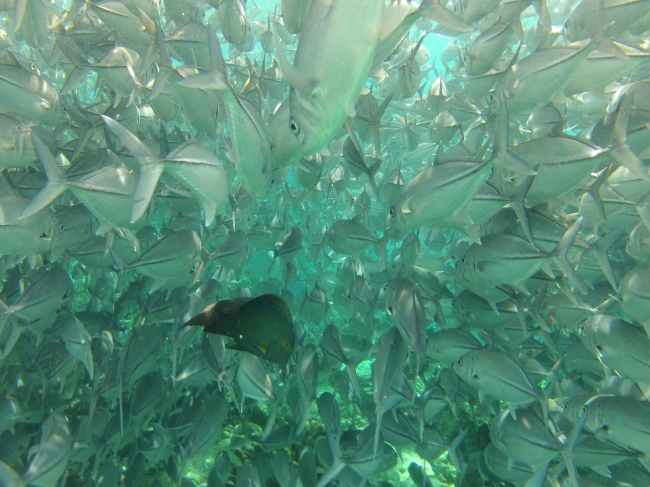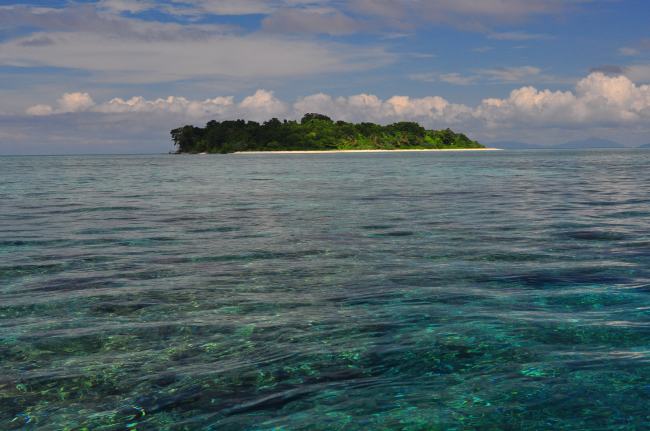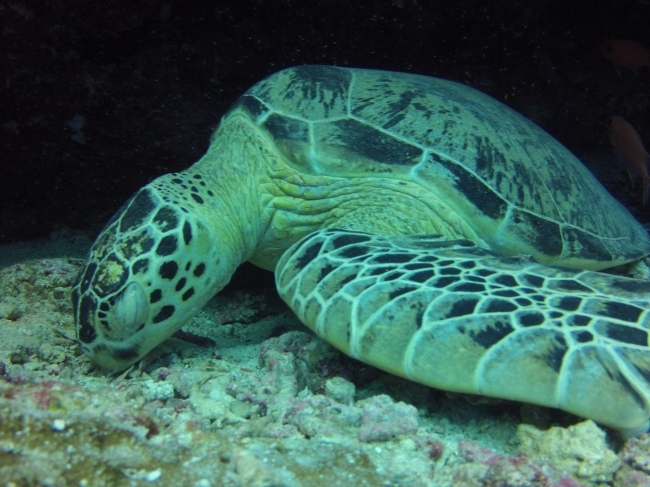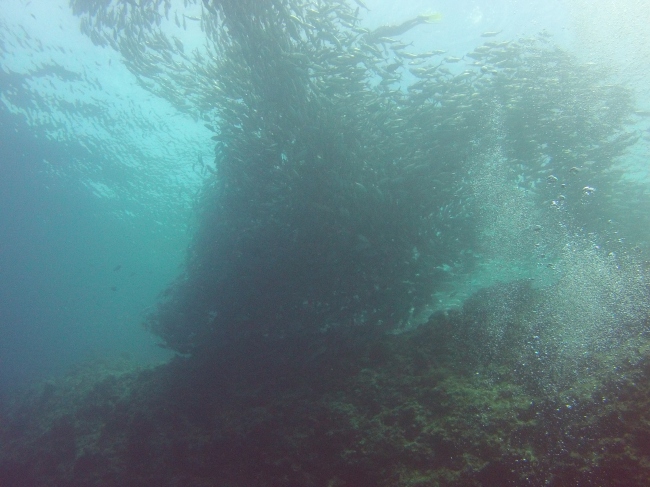Ever since I first started diving in 2007, there’s been one place above all others that I’ve been wanting to go to. From conversations with fellow divers during my travels, google searches of ‘top places in the world to dive’ and select YouTube videos, one name kept coming up over and over again.
Sipadan.
Sipadan is a tiny island off the coast of eastern Sabah in Borneo Malaysia. It is consistently ranked among the very best places in the world to dive and as such, in order to protect its pristine environment, the Malaysian government has instituted a limit of 120 divers per day. Thus in order to dive at Sipadan, one often has to book months in advance in order to secure a spot. After much haggling and emailing over the past month or so, I was finally able to secure a couple of days at Sipadan and see if the hype was justified.
From a distance, Sipadan looks like your typical tropical island: sandy white beaches, palm trees and crystal clear blue water.
However, under the waves is a paradise unlike any that I’ve seen before. Most of the great dive sites I’ve been to in the past had one or two qualities that stood out. Bali/Gili Trawangan had turtles, sharks and manta rays. Costa Rica and Cabo had large schools of fish. Bohol in the Philippines had magnificent vertical walls. Belize had fantastic visibility, really warm water and healthy, colorful coral.
Sipadan had ALL of this.
To have everything in one place was incredible. But the one thing that makes Sipadan truly unique is the sheer amount of marine life on its reefs. The very first time I hopped in the water, I immediately saw a huge ball of barracuda, probably the best known fish on the island.
My second dive was filled with so many turtles and sharks, I didn’t know where to look half the time. Seemed like everywhere I turned, it was ‘oh look, there’s another turtle’ or ‘hey, look 3 more sharks’. I even found a turtle completely knocked out in a reef, completely unaware I was inches from its head.
The incredible things about Sipadan is that even when you’re not seeing the big stuff (turtles, sharks, huge balls of fish), there’s always SOMETHING no matter where you look. All types of little colorful fish along the reefs, a ray over here, a lion fish over there. Diving here would get you ridiculously spoiled. By my 3rd or 4th dive, I was beginning to think, ‘oh its just another turtle’. I had to keep reminding myself that this is NOT normal, that I’ve had countless dives where I saw nothing and that just seeing ONE turtle would have made it a successful dive.
My last dive on both days was at Sipadan’s best known dive site: Barracuda Point. No barracudas were spotted on either day here but if I had to choose one lasting memory of this incredible place, it would be this:
Gigantic swarms of big-eyed Jacks, forming a wall so dense I couldn’t see my fellow divers on the other side. Being completely engulfed in the school that the only image visible when I did a 360 degree turn is one of hundreds of fish eyes staring at me.
I thought these things only happened in BBC documentaries. Safe to say, the hype is justified.

















